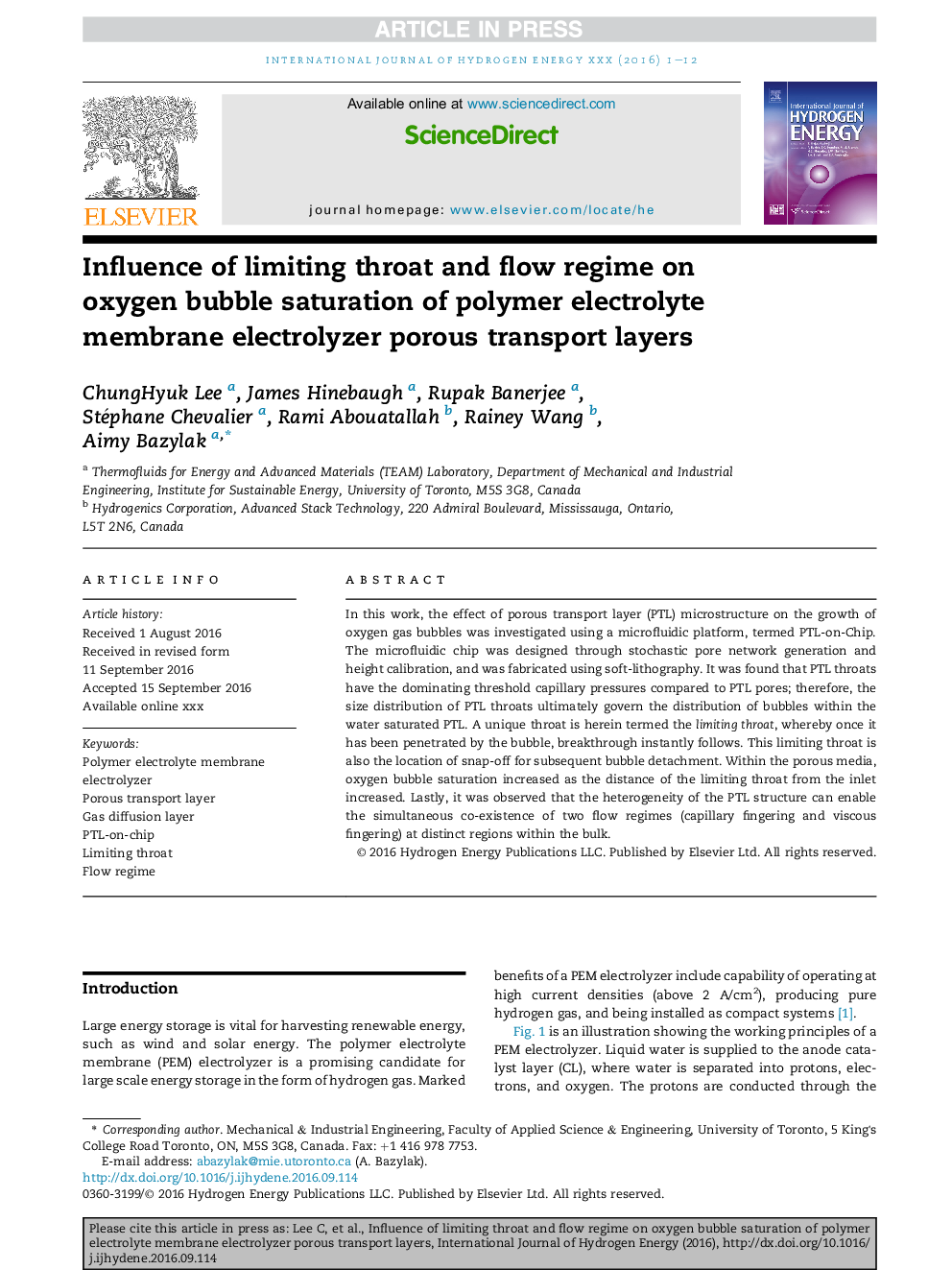| Article ID | Journal | Published Year | Pages | File Type |
|---|---|---|---|---|
| 5148487 | International Journal of Hydrogen Energy | 2017 | 12 Pages |
Abstract
In this work, the effect of porous transport layer (PTL) microstructure on the growth of oxygen gas bubbles was investigated using a microfluidic platform, termed PTL-on-Chip. The microfluidic chip was designed through stochastic pore network generation and height calibration, and was fabricated using soft-lithography. It was found that PTL throats have the dominating threshold capillary pressures compared to PTL pores; therefore, the size distribution of PTL throats ultimately govern the distribution of bubbles within the water saturated PTL. A unique throat is herein termed the limiting throat, whereby once it has been penetrated by the bubble, breakthrough instantly follows. This limiting throat is also the location of snap-off for subsequent bubble detachment. Within the porous media, oxygen bubble saturation increased as the distance of the limiting throat from the inlet increased. Lastly, it was observed that the heterogeneity of the PTL structure can enable the simultaneous co-existence of two flow regimes (capillary fingering and viscous fingering) at distinct regions within the bulk.
Keywords
Related Topics
Physical Sciences and Engineering
Chemistry
Electrochemistry
Authors
ChungHyuk Lee, James Hinebaugh, Rupak Banerjee, Stéphane Chevalier, Rami Abouatallah, Rainey Wang, Aimy Bazylak,
